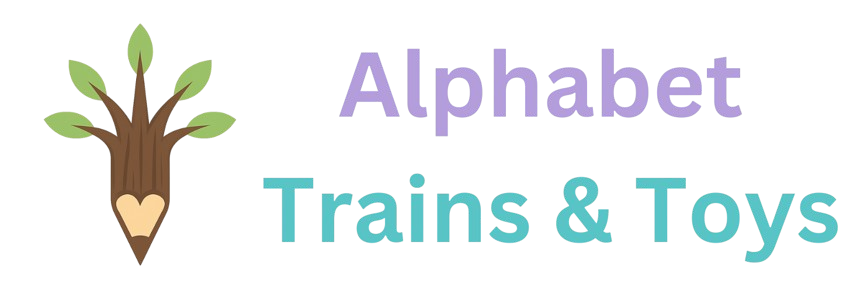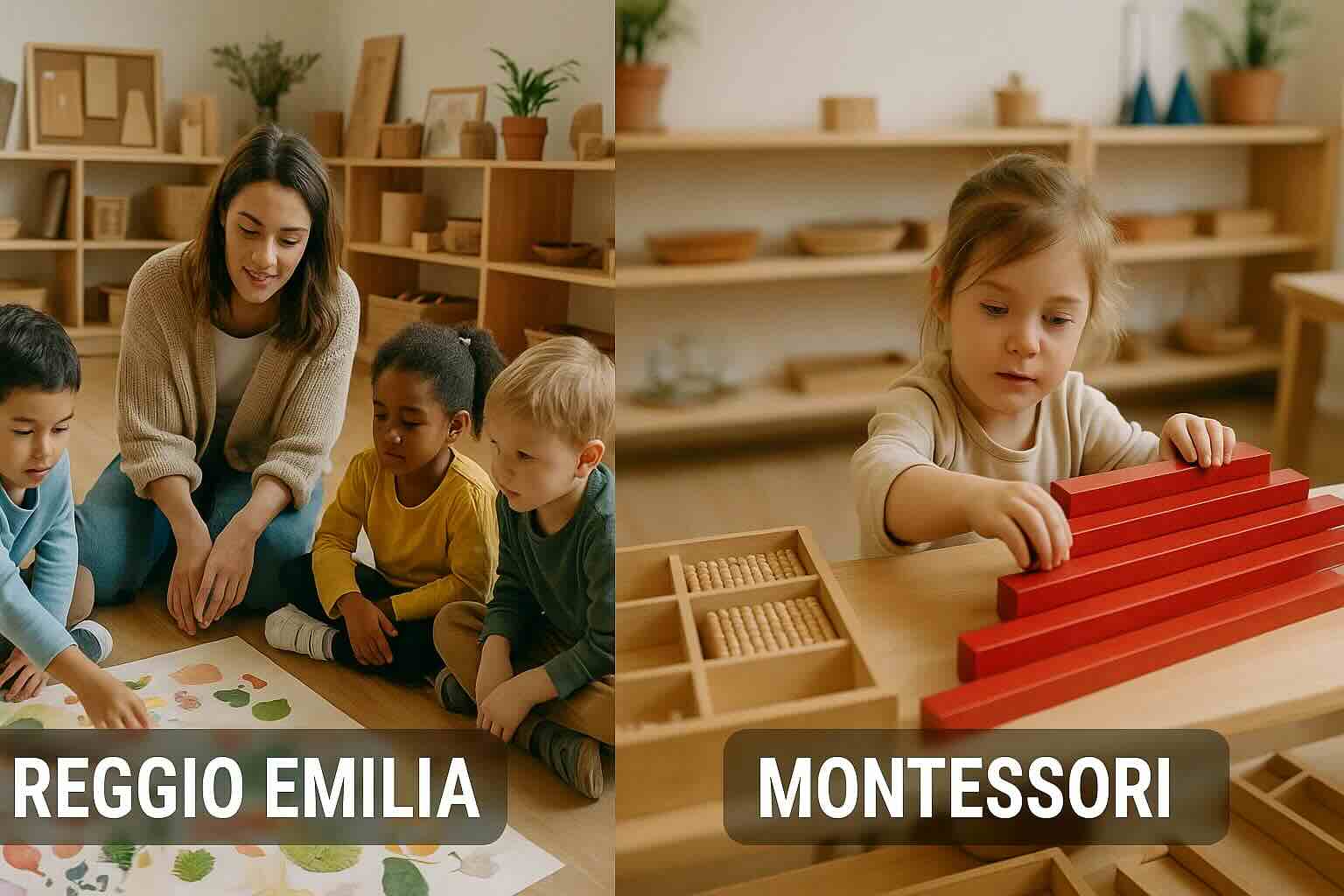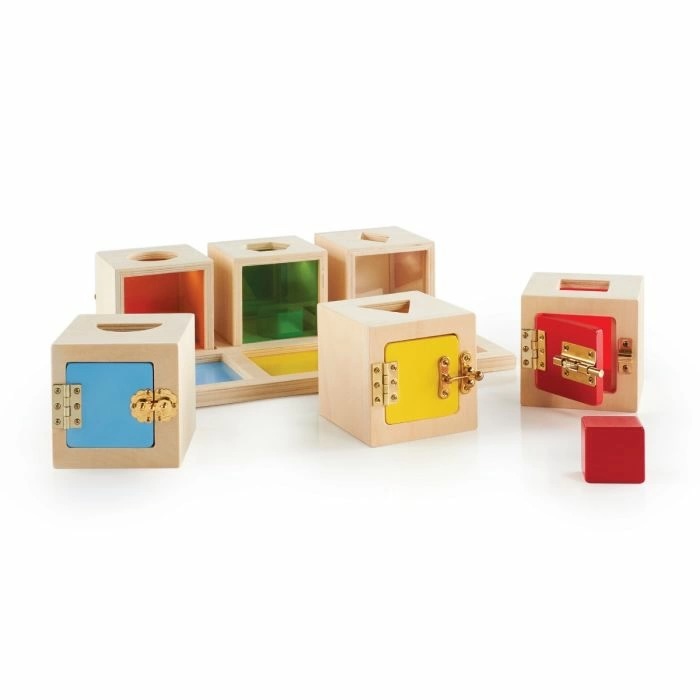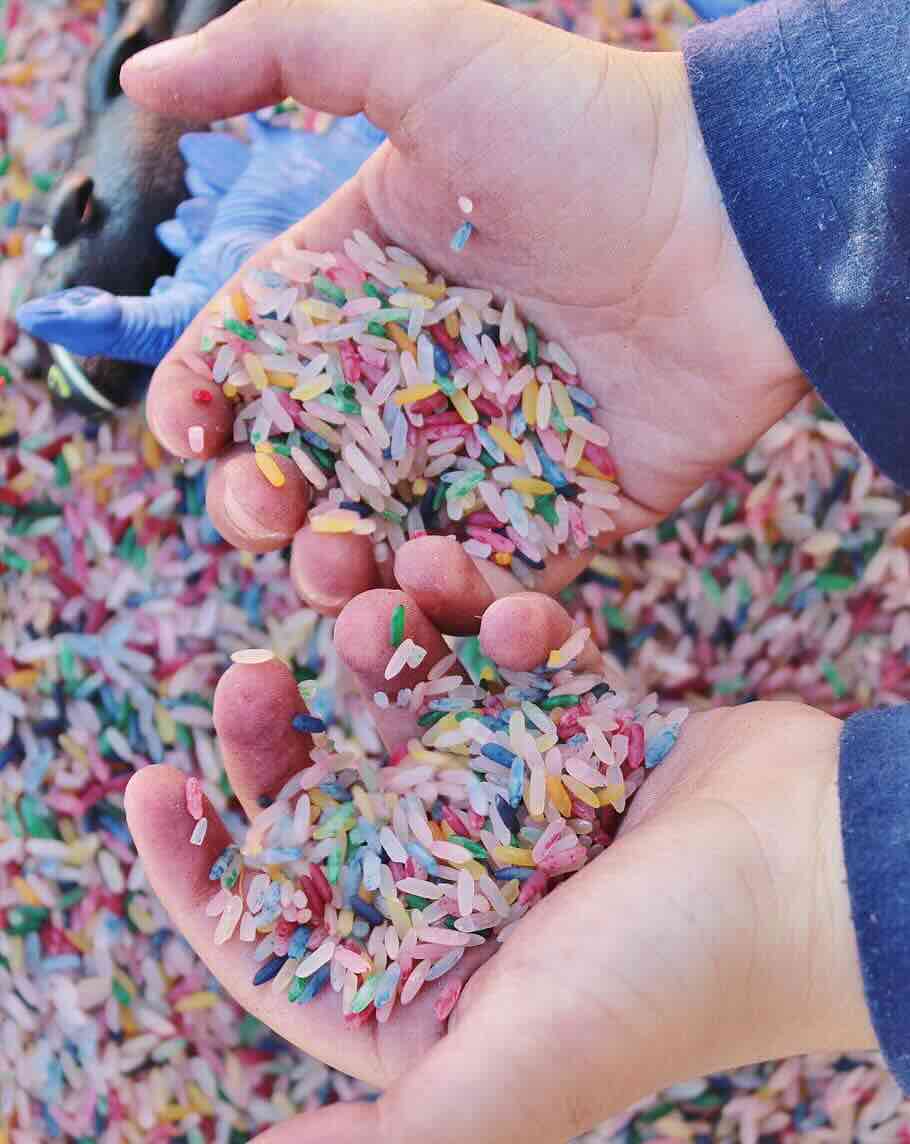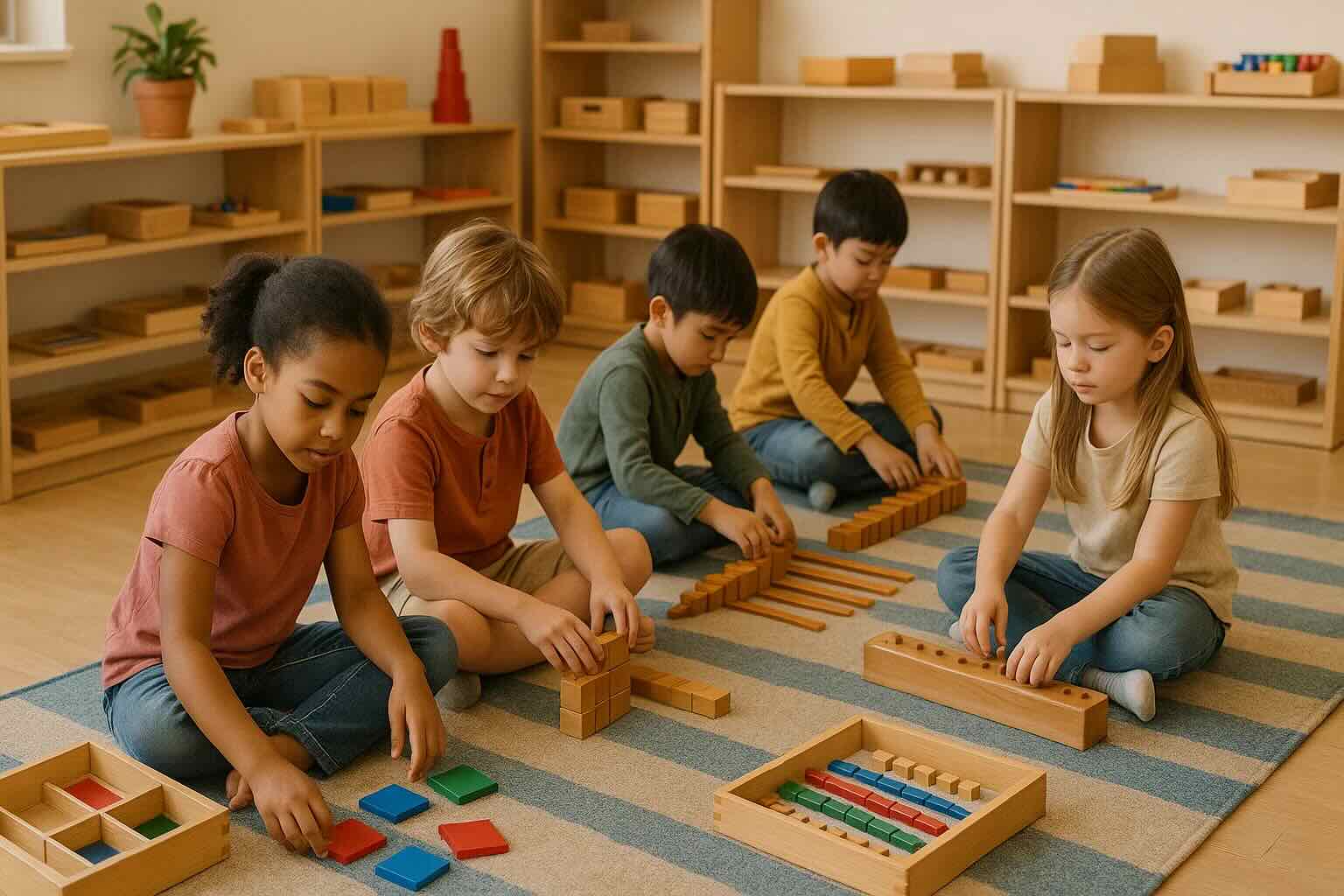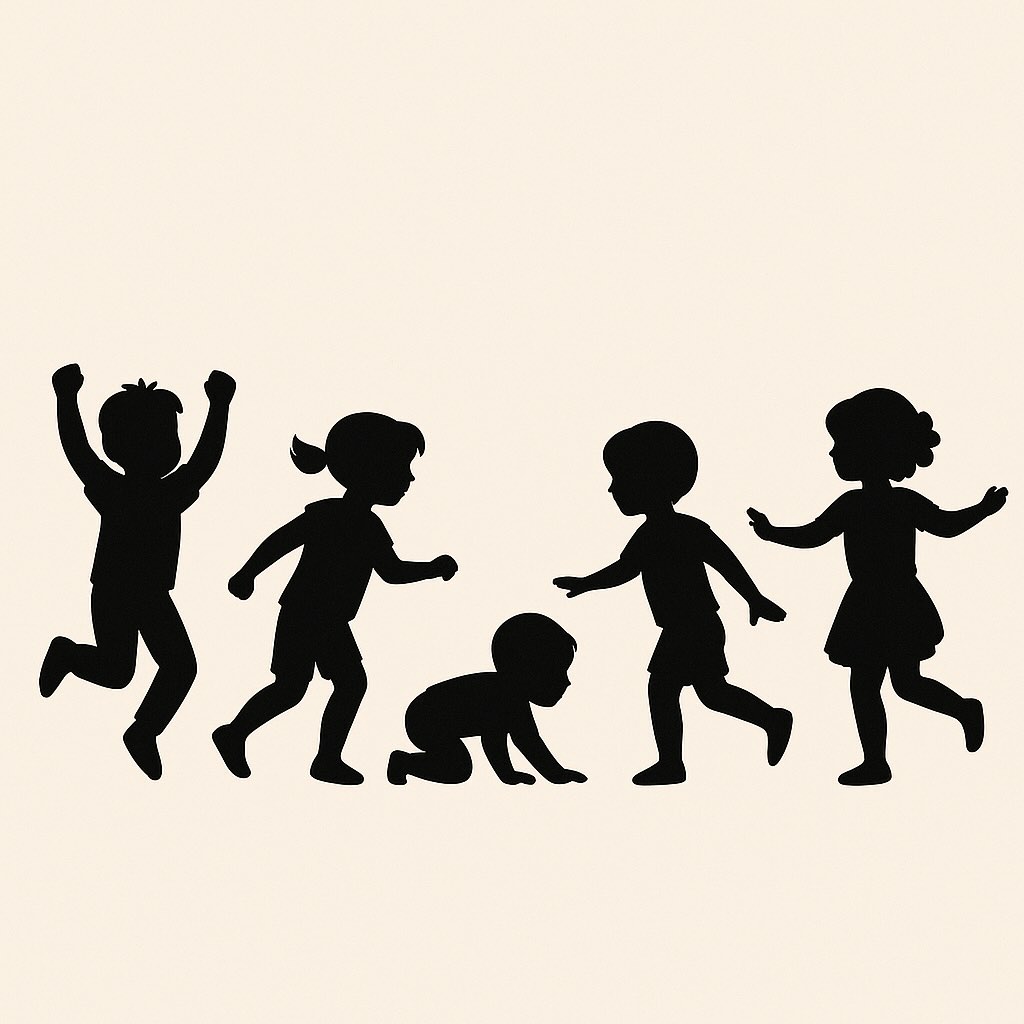As you face a major choice for your child's early education, you can feel the importance of picking the right preschool approach. Early childhood education (education for children from birth to age 8) is more than a step; it's the base that shapes your child's future. You may know about "Reggio Emilia" and "Montessori," but it's key to see how each supports your child's growth.
Both Reggio Emilia (an educational philosophy emphasizing collaboration and creativity) and Montessori (another education method promoting self-directed learning and independence) give kids rich, focused learning experiences. But, as you make this big decision, you'll find each has its own philosophies and ways to help your child grow. This article will shed light on these differences and help you pick a preschool that fits your child’s needs and personality.
Imagine your child flourishing in a place that meets their curiosity and potential. It could be the teamwork and projects of Reggio Emilia or the self-driven, free exploration of Montessori. Each detail shapes a balanced learning journey.
Montessori toys designed for early childhood can also support the philosophies discussed here, helping your child learn through play at home.
👉 Tip: When touring preschools, ask to observe a typical day. See whether the environment promotes curiosity, independence, and collaboration—key signs of a strong Montessori or Reggio Emilia program.
Summary: This guide compares the Reggio Emilia and Montessori educational philosophies, explaining their core principles, differences, and how to choose the best preschool approach for your child's learning style and family's values.
Key Takeaways
- Both Reggio Emilia and Montessori approaches are child-centered and focus on early childhood education.
- Understanding the unique aspects of each educational philosophy helps in choosing preschools that best fit your child's development needs.
- The Reggio Emilia approach emphasizes collaborative learning and project-based environments.
- Montessori prioritizes self-guided learning and uninterrupted work periods.
- Both systems place a significant role on the teacher's facilitation and learning materials used in the classroom.
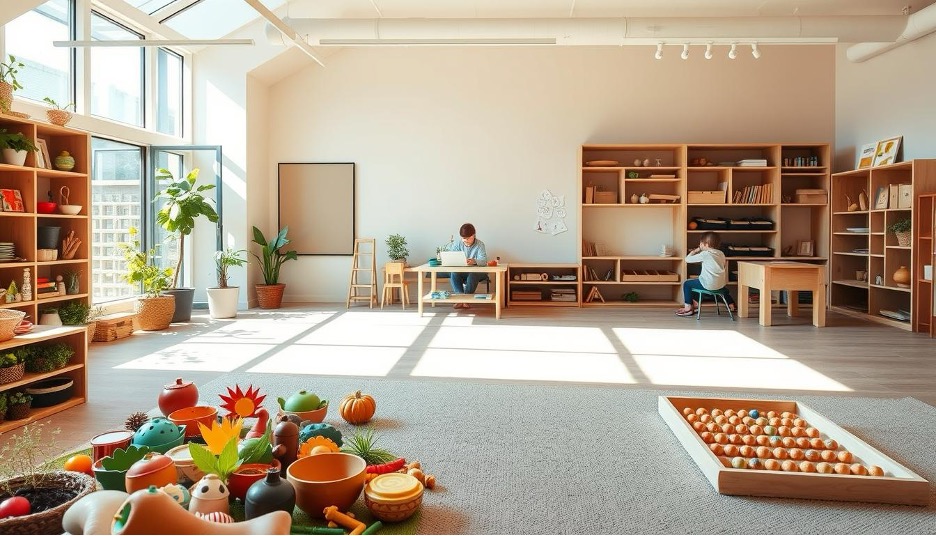
Introduction to Reggio Emilia and Montessori
Choosing the best educational path for your child is important. Reggio Emilia and Montessori, both founded in Italy, offer unique approaches. They are valued worldwide for their educational philosophies.
Origins
The Montessori origins can be traced back to Rome in 1907. That's where Dr. Maria Montessori started her first school, Casa dei Bambini. Her approach focused on self-directed learning and hands-on activities. It helped children grow independent and develop a love for learning early on.
The Reggio Emilia origins began after World War II in Reggio Emilia, Italy. Led by Loris Malaguzzi, a teacher and psychologist, it stressed collaborative learning. Kids were active in their education, exploring what interested them.
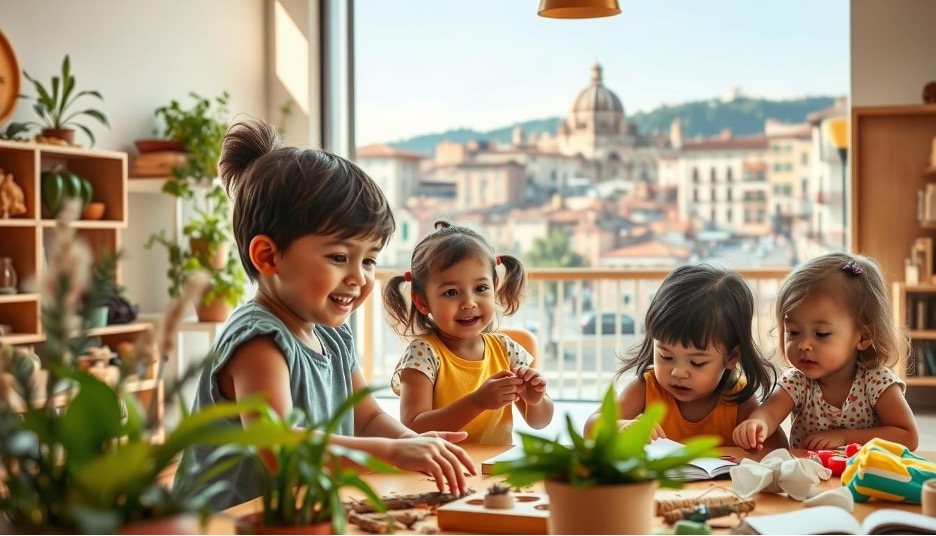
Philosophical Foundations
The Montessori method creates a space where kids can choose their activities. This boosts independence, focus, and self-discipline. Dr. Montessori believed in learning through doing and sensory experience.
In Reggio Emilia's philosophy, every child's potential is respected. Loris Malaguzzi promoted a collaborative space for in-depth project exploration. Children express themselves in many ways, like art and play.
While both philosophies have Italian roots, they provide different approaches to education. Each aims to nurture children's growth and learning potential.
| Aspect | Montessori | Reggio Emilia |
|---|---|---|
| Founder | Maria Montessori | Loris Malaguzzi |
| Foundation Year | 1907 | Post-World War II |
| Educational Philosophy | Self-directed learning through sensory experiences | Collaborative, project-based learning |
Key Principles of the Reggio Emilia Approach
The Reggio Emilia approach focuses on kids leading the way. They're encouraged to share thoughts through interaction, creativity, and discovery. Teachers in this method aim to create a supportive and teamwork-filled environment.
Collaborative Learning
Collaborative learning is key in Reggio Emilia. Kids learn by working together and talking, taking part in group activities. This way of learning helps build social skills and lets kids see different viewpoints.
Project-Based Approach
Reggio Emilia uses projects to spark children's interests. These projects can go on for weeks or months. They start from what the kids are curious about. Through these projects, kids get better at thinking critically and solving problems.
💡 Idea: Try a mini project-based learning activity at home! Ask your child what they're curious about and help them create a simple project around it, like building a birdhouse or making a weather chart.
Learn more about project-based learning principles.
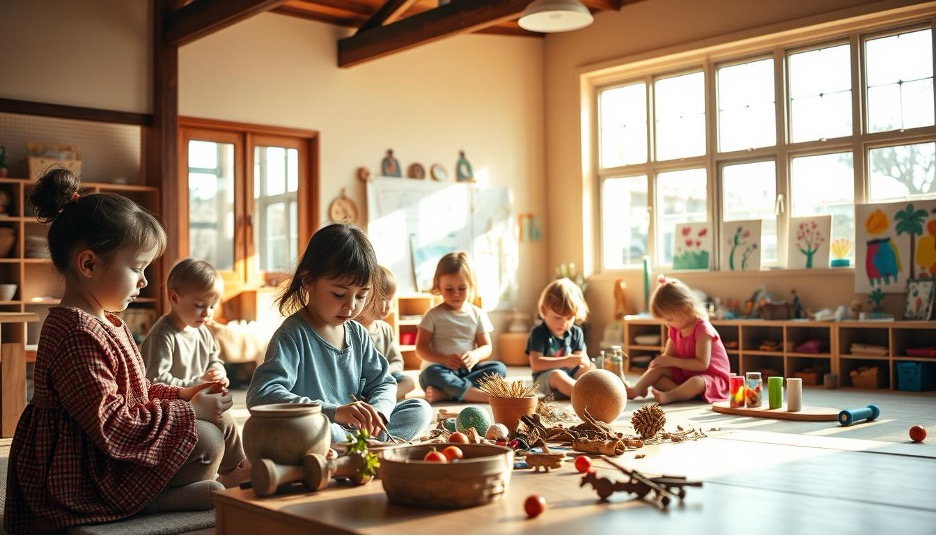
Role of the Teacher
In Reggio Emilia, teachers are more like guides. They watch and learn together with the kids, tailoring learning to fit each child. They think over results and keep improving their methods to help every child thrive.
The Concept of 100 Languages
The idea of 100 languages is unique to Reggio Emilia. It highlights the many ways kids show their thoughts and feelings. This could be through art, movement, writing, or play. Teachers support these diverse ways, helping kids explore and understand the world creatively.
Key Principles of the Montessori Approach
The Montessori method uses special principles for children's intellectual and social growth. It includes self-guided learning, long work times, and a structured environment. Kids grow well in these specially designed settings.
Self-Guided Learning
Self-guided learning is central in a Montessori classroom. This approach lets kids pick their activities, which builds self-discipline and motivation. They dive deep into their tasks, boosting their thinking skills. Montessori-aligned activities at home, like Montessori toys, also foster independent play.
Uninterrupted Work Time
Montessori stresses long, uninterrupted work periods. Kids focus better and explore their tasks deeply. They learn patience and feel proud when finishing their work.
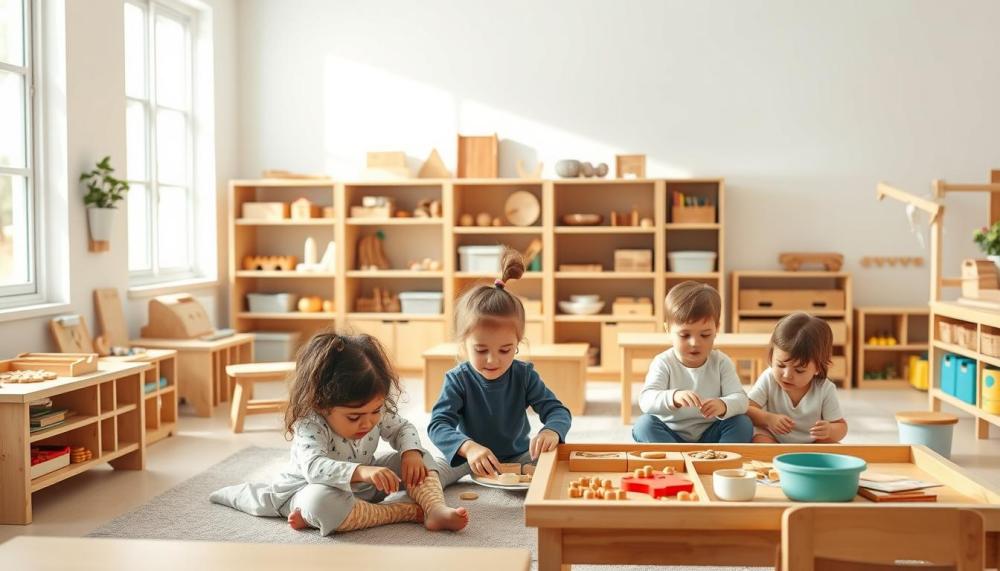
Role of the Teacher
Montessori teachers guide more than direct. They watch each child's progress, stepping in when necessary. This way, kids learn on their own, fostering a love for discovery.
🕑 Home Strategy: Create a focused work time at home by setting a timer for 30–45 minutes and letting your child choose an activity to complete without interruption. Celebrate their focus afterward!
Mixed Age Classrooms
Mixed age groups are key in Montessori classrooms. Kids of different ages learn together, encouraging sharing of knowledge. The older ones lead the younger, building social and leadership skills. This approach makes a friendly, inclusive atmosphere.
If you want an indepth discussion of the Montessori method, visit our Guide to Montessori Education.
Classroom Environment: Reggio Emilia vs Montessori
When comparing a reggio emilia classroom to a montessori classroom environment, you'll see different design philosophies. Both aim to support kids' learning in their own ways.
In a reggio emilia classroom, there's a big focus on beauty and spaces that respect a child's ability to learn. Rooms are filled with light and use art to inspire. Kids' art is everywhere, making the place feel proud and creative. This setting aims to be safe and inspiring, promoting creativity and teamwork.
Meanwhile, a montessori classroom environment focuses on structure to boost focus and independence. The setup is clear and simple, with furniture and items just the right size for kids. It's organized around learning areas like math and language to help children learn on their own time.
Both styles really care about making spaces centered on kids. A reggio emilia classroom designs beautiful, personal spaces reflecting kids' learning adventures. A montessori classroom environment, however, focuses on a calm space that encourages self-discovery and learning.
Role of Parents and Community in Each Approach
In both the Reggio Emilia and Montessori methods, parents play a key role. These philosophies believe strongly in the role of family. They ensure learning goes beyond the school and into the community.
Parent Involvement in Reggio Emilia
The Reggio Emilia model relies heavily on parent involvement. In this approach, parents are seen as co-educators. They take part in classroom activities daily. Their input helps shape the curriculum, linking home and school closely. This collaboration enriches the learning experience. It also creates a unified education community, valuing every member’s contribution. Learn more about the Reggio Emilia educational project.
👤 Connection Tip: Stay engaged with your child's school projects. Ask open-ended questions at dinner like, "What project are you working on?" or "What was the best part of your project today?"
Parent Involvement in Montessori
Montessori's view on parent involvement is a bit different. While still important, Montessori asks parents to observe and learn the method. They participate less in daily classroom activities. Keeping communication open between teachers and parents is important in this method. It ensures the support from home matches the Montessori way. This builds a cooperative community. It helps both parents and educators aid the child's growth together.
Comparing Educational Tools and Materials
Knowing about different educational tools is key for parents and teachers.
Both Montessori and Reggio Emilia methods use unique materials to help kids learn better.
Montessori materials aim to help kids become independent and enhance motor skills. Each item has a specific role, like helping with math, senses, or everyday skills. They also let kids see and fix their own mistakes, which builds independence and confidence. Explore wooden building blocks that align with Montessori material design.
Meanwhile, Reggio Emilia resources include all sorts of items, even common ones, to boost creativity and discovery. This method values what students are interested in, using things like nature, recycled stuff, and art supplies. These tools help kids learn actively, connecting lessons to the real world. Discover how loose parts play encourages creativity in young children.
Although both methods provide excellent learning aids, they use them in different ways. To better see these differences, here's a table comparing them:
| Aspect | Montessori | Reggio Emilia |
|---|---|---|
| Material Types | Wooden objects, specially designed tools, and self-correcting puzzles | Natural materials, recycled items, and flexible artistic resources |
| Purpose | Build specific skills, encourage independence, and promote self-awareness | Inspire exploration, cater to interests, and support creative expression |
| Environment | Structured, with materials having designated areas | Fluid, adapting to the children’s projects and interests |
These preschool education materials are crucial in creating a supportive and effective learning space.
By understanding the different approaches, you can choose what's best for your child’s education and your family’s values.
Reggio Emilia vs Montessori: Suitability for Different Children
Your child's unique personality and how they learn are key to their success in school. Knowing different learning styles and matching them with the right preschool method can make learning more enjoyable.
Child's Learning Style
It's crucial to know how your child likes to learn when choosing preschools. For example, a child who likes to work alone and do things on their own time might do well with the Montessori approach. This method lets kids choose their activities and work at their own speed.
If your child enjoys working with others and being creative, the Reggio Emilia approach could be a good fit. It’s a way of learning where kids work together and use different ways to express themselves, like art and storytelling.
Family's Educational Goals
Your family's educational goals play a big role in choosing the right preschool. If you want a school that adjusts to your child's needs and speed, Montessori might be best. It encourages kids to be independent and self-motivated, skills that help them throughout life.
On the flip side, if your goals include community involvement and creativity, consider the Reggio Emilia approach. It focuses on teamwork, communication, and thinking deeply. This approach builds a strong social and cognitive foundation for kids.
💬 Quick Insight: Some kids flourish with structure (Montessori), while others thrive with open creativity (Reggio Emilia). Watch how your child plays at home—it gives strong clues to their ideal learning style.
Knowing the differences between reggio vs montessori is important. It helps you pick a school that fits both what your child needs and what your family values. This leads to a positive and fulfilling preschool experience.
Conclusion
Choosing your child's first school is a big step in their growth. You can look at different ways schools teach, like Reggio Emilia and Montessori, to decide what's best. Reggio Emilia values working together and expressing thoughts in many ways. Montessori lets kids learn on their own and be independent.
It's important to think about how your child likes to learn and what you want for their education. If your child enjoys being with others and working on projects, Reggio Emilia might be a good fit. For kids who like to figure things out on their own, Montessori might be better. Each method helps kids grow in their own way.
Think about what will make your child most curious and eager to learn. You might prefer the creativity in Reggio Emilia or the independence in Montessori. The main aim is to find a place where your child can thrive. Carefully comparing these approaches will help you build a solid base for your child's future. This way, they will learn well and develop even better.
Educational Toys for Preschoolers
Support learning at home with curated Educational Toys for Preschoolers that encourage hands-on exploration, creativity, and independent thinking.
Explore Educational Toys
FAQ
What are the main differences between Reggio Emilia and Montessori approaches?
The Reggio Emilia approach focuses on learning together, project work, and using many ways to express ideas. The Montessori method lets kids learn by themselves, offers them lots of time to work without interruption, and uses classrooms with kids of different ages following a set curriculum.
What are the origins of the Montessori and Reggio Emilia approaches?
Dr. Maria Montessori created the Montessori method in Italy in the early 1900s. Loris Malaguzzi developed the Reggio Emilia approach in Reggio Emilia, Italy, after World War II ended.
How do Montessori and Reggio Emilia philosophies differ?
The Reggio Emilia belief is that kids have many ways to express themselves and learn by interacting. Montessori focuses on learning by oneself, using hands-on activities, and practicing everyday skills.
What is the role of teachers in each approach?
In Reggio Emilia, teachers work and learn with the kids. They record what the kids learn and help guide their projects. Montessori teachers prepare the learning space and help each child follow their learning journey.
How does collaborative learning work in a Reggio Emilia classroom?
In a Reggio Emilia classroom, kids work together on projects. They share ideas and learn from one another, practicing teamwork and how to communicate well.
What is the concept of 100 Languages in Reggio Emilia?
The 100 Languages concept is about all the different ways kids show what they know and learn. This includes through art, play, moving around, and talking. It shows how kids can express themselves in many forms.
How does self-guided learning operate in a Montessori classroom?
In Montessori classrooms, kids pick what they want to do based on what interests them and learn at their own speed. The room is set up to encourage exploring and learning on their own.
What are mixed-age classrooms in Montessori education?
Montessori classes have kids of various ages together, typically three-year age spans. Younger students learn from the older ones, and older students help and learn by teaching the younger ones.
How do the classroom environments differ between Reggio Emilia and Montessori schools?
Reggio Emilia classrooms change to spark creativity, using movable furniture and materials for different projects. Montessori classrooms are carefully arranged with child-sized furniture and learning materials that kids can easily get to.
How are parents involved in Reggio Emilia and Montessori schools?
In Reggio Emilia, parents play a big part in the learning process and join in on school projects. Montessori lets parents help with their child's learning at home and join school events to understand the teaching method.
What types of educational tools and materials are used in each approach?
Reggio Emilia uses natural materials that let kids be creative and explore. Montessori materials are specific for hands-on learning, teaching practical skills and academic topics.
How do you determine which approach is suitable for your child's learning style?
Think about what your child likes, how they act, and how they learn. Reggio Emilia is good for kids who like working with others in a flexible setting. Montessori is a fit for those who like order and learning on their own.
What should you consider about your family's educational goals when choosing between Reggio Emilia and Montessori?
Think about what's important for your family's education goals. If creativity, being part of a community, and working together matter to you, consider Reggio Emilia. If you value being independent, self-motivated, and a set plan, Montessori might be better for your goals.
